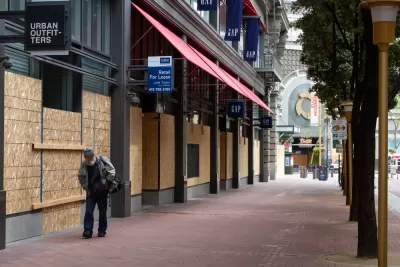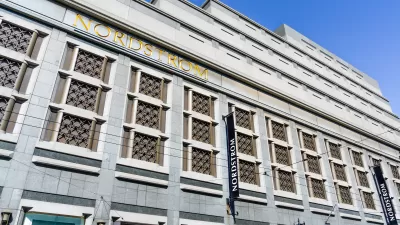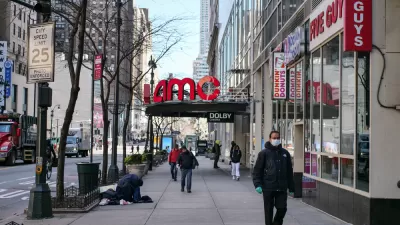The pandemic is accelerating recent trends in commercial real estate with potentially catastrophic consequences for the commercial corridors that play such a fundamental role in the urban fabric.

An article by Jorge González and Jein Park checks in with the state of commercial corridors, which the article calls the "backbone of neighborhoods."
Despite their centrality to so many neighborhoods commercial corridors are dealing with major destabilizing forces, and according to the article that destabilization reaches far beyond the businesses owners effected by the economic effects of the pandemic. " Increased storefront vacancies not only indicate economic hardship for property owners, businesses, and local governments (through reduced fiscal revenues), but they also affect the surrounding communities," write González and Park.
The article identifies one critical trend: The pandemic is accelerating a decade-long trend of rising retail vacancies.
Today, Yelp data show permanent business closures have increased steadily since the pandemic began, and as of September, 60 percent of the 160,000 closures registered in the platform were permanent. The hardest-hit businesses are restaurants, retail stores, beauty stores and spas, bars and nightlife venues, and fitness venues—key components of commercial corridors.
The negative effects of vacancies (e.g., reduce property values, fire risk, crime, and negative health effects) can be mitigated by local governments, according to the article, even if the federal government never puts together a second round of economic stimulus. Among the suggested prescriptions for the economic downturn for commercial corridors during the pandemic, the article suggests grants and loans, repurposing of public spaces previously devoted to automobiles, relaxed zoning and permitting, and public art programs, vacancy taxes, and more.
Each recommendation includes more detail in the source article.
FULL STORY: Local Policies Can Protect Commercial Corridors as the Pandemic Continues

Montreal Mall to Become 6,000 Housing Units
Place Versailles will be transformed into a mixed-use complex over the next 25 years.

Planetizen Federal Action Tracker
A weekly monitor of how Trump’s orders and actions are impacting planners and planning in America.

DARTSpace Platform Streamlines Dallas TOD Application Process
The Dallas transit agency hopes a shorter permitting timeline will boost transit-oriented development around rail stations.

Without International Immigrants, the Rural US Population Would Be Falling 58%
Census data shows that population growth in rural areas is due in large part to international migrants.

Dead End: Nine Highways Ready for Retirement
The Freeways Without Futures report describes the nation’s most promising highway removal proposals.

Congressman Proposes Bill to Rename DC Metro “Trump Train”
The Make Autorail Great Again Act would withhold federal funding to the system until the Washington Metropolitan Area Transit Authority (WMATA), rebrands as the Washington Metropolitan Authority for Greater Access (WMAGA).
Urban Design for Planners 1: Software Tools
This six-course series explores essential urban design concepts using open source software and equips planners with the tools they need to participate fully in the urban design process.
Planning for Universal Design
Learn the tools for implementing Universal Design in planning regulations.
City of Mt Shasta
City of Camden Redevelopment Agency
City of Astoria
Transportation Research & Education Center (TREC) at Portland State University
City of Camden Redevelopment Agency
Municipality of Princeton (NJ)
Regional Transportation Commission of Southern Nevada





























